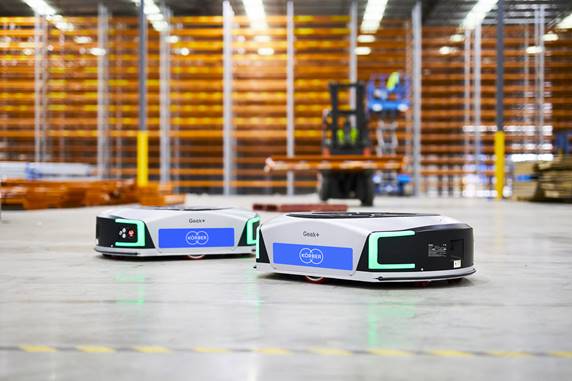RTITB has revealed lift truck training and assessment statistics for 2020 which could indicate an upcoming ‘safety time bomb’, where thousands of candidates are operating without up-to-date training.
“Prior to the Covid-19 pandemic, the number of operator tests taking place each year was fairly steady, but we saw declines in all areas in 2020,” says Laura Nelson, Managing Director for RTITB, the UK and Ireland’s leading workplace transport training accrediting body. “Covid-19 did of course present risks and challenges for training and assessment, but operators without the correct training also pose a serious danger to the supply chain.”
Statistics from RTITB show that Counterbalance Lift Truck Operator tests declined by 24.7% from 2019 to 2020, accounting for around 10,000 operators across all candidate types (Novice, Refresher, Conversion). The number of Counterbalance Lift Truck operators being tested for the first time was down by 29.2%, with an even bigger decline of 32.8% for Reach Truck operators. Overall, across all candidate types, there were around 2,400 fewer Reach Truck operator tests in 2020, compared to the previous year.
“With the number of new operators down by around 30% and overwhelming demand in the supply chain, it begs the question of who is filling these gaps?” asks Laura. “Are untrained people operating trucks? Or are qualified operators working extremely long hours to cover the deficit and risking fatigue, which could also be jeopardising safe operation.”
Refresher training also saw a significant decline, with Counterbalance and Reach Truck operator tests down by 22.2% and 23% respectively from 2019 to 2020.
“Worryingly, this means that almost a quarter of the candidates due for refresher training are potentially out there operating without any update on skills – how long before there is a serious incident as a result of this?” asks Laura. “Some might suggest that these operators may have left the industry, but this is unlikely considering the huge demand on the supply chain during the pandemic.”
As well as a decline in operator test numbers, Lift Truck Instructor examinations have also seen a huge dip of 50% in 2020. This lack of instructors could also be a key contributor to the deficit in operator training and testing.
“After 2020, many supply chain organisations need to catch up on their operator training,” says Laura. “But with less instructors qualifying or re-qualifying, who is going to deliver this?
“Though the pandemic has meant the training industry has had to adapt, delivering both operator and instructor courses in a Covid-secure way is possible, and in most cases, there is no real need to delay training,” she continues. “In addition, the HSE suggests that eLearning can be used for operator training, and we have seen this really help training plans from falling behind in many organisations.”
For example, RTITB eLearning programs can be used to help top up a qualified operator’s knowledge so they can extend their refresher period, or can be used to provide comprehensive, engaging novice theory training. Courses are available for Counterbalance and Reach Truck operators, alongside many other equipment types, including Pallet Trucks, MEWPs, VNA, Order Pickers and Tow Tractors. Selected eLearning courses are also available for Plant and LGV training.






